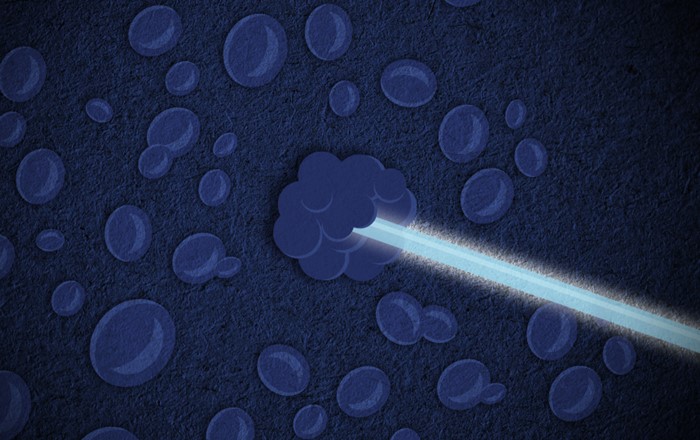
Swansea University physicists are using their research undertaken at the CERN facility in a major project aimed at developing next-generation, low-cost radiotherapy for cancer treatments that will be particularly effective when treating children and tumours near sensitive tissues.
The Ion Therapy Research Facility (ITRF) has been established with a £2m investment from the Science and Technology Facilities Council (STFC) to kick-start research on next-generation radiotherapy treatments for cancer. The Swansea University team, led by physicist Dr Christopher Baker, contributes to the Laser hybrid Accelerator for Radiobiology Applications (LhARA), an ITRF project, which will use laser sources to create intense proton and ion beams which it will steer to their target with the help of plasma lenses.
Ion therapy targets cancers very precisely, increasing success rates and reducing side-effects, which makes it the ideal treatment for children whose organs are still growing, or for solid tumours that lie close to sensitive tissues.
New technologies being developed as part of the LhARA project will mean that more types of ions can be provided with greater control over how they are used for treatment than is possible at current radiotherapy facilities and do this at a lower cost. By reducing costs, LhARA will help make this treatment available to more patients.
Dr Baker said: “It is amazing that the techniques we use at CERN for the control of charged particle clouds and plasmas to study the fundamental properties of antimatter will now be employed for cancer treatments.”
Professor Stefan Eriksson, who coordinates Swansea University’s programmes in Antimatter Physics and LhARA said: “Our curiosity-driven research into the properties of antimatter may one day help explain why most antimatter appears to have vanished. This research requires state-of-the art instrumentation which we develop ourselves with public funding. We are now presented with a fantastic opportunity to provide a direct return on this investment by using our accumulated knowledge to design and build crucial elements of LhARA.”
Dr Richard Hugtenburg, a medical physicist expert at Swansea University who practices in radiotherapy at neighbouring Singleton Hospital, is also part of the team. He comments on the advances in the quality of patient treatments that the LhARA project is likely to bring. “There is a long history of advances in particle and nuclear physics leading to mainstream medical technologies, however at the heart of a radiotherapy treatment is the patient. Ion therapy needs to be delivered in a reproducible way that is also comfortable for the patient, often the most challenging aspect in the development of a new medical radiation technology. By reducing the complexity, cost and size of the instrumentation required to produced ion beams, LhARA is the best hope for wide-spread implementation of carbon and other ion therapies in hospitals.”
Tests will now begin on both the laser source concept and investigations of plasma lenses for steering particle beams, two key technologies that must be develop for the project. As LhARA is developed, intermediate stages of the facility will be used to study the effects of the beams it produces on cancer cells as well as normal tissue cells, improving the understanding of how ions interact and are effective in killing cancer cells, while simultaneously providing experience in utilising the novel ions beams made possible by the LhARA project.
